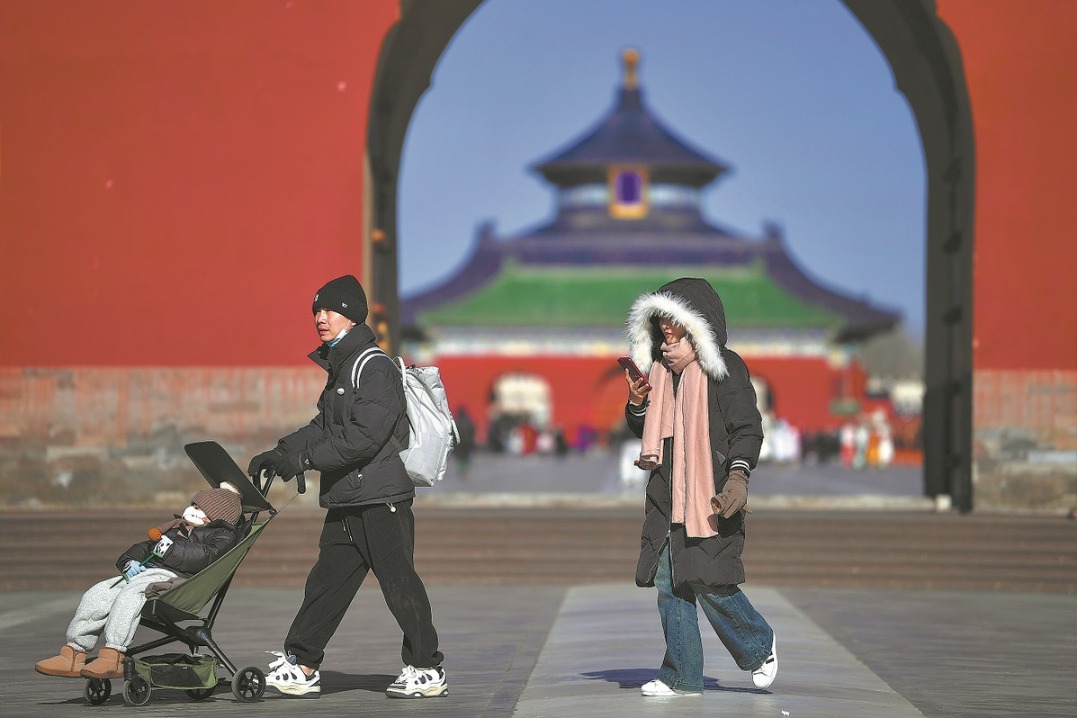Country takes great strides in food security
By Li Guoxiang | China Daily | Updated: 2022-10-15 08:10

In 2013, China adopted a national strategy for food security, characterized by self-sufficiency based on domestic grain production, production capacity, moderate imports and technological support. China has also established a strict farmland protection system and adopted a policy to ensure the sustainable use of farmlands, innovative application of agricultural technology, and self-reliance in seeds.
Last year, China's grain yield exceeded 680 million tons, an increase of more than 70 million tons over 2012. In fact, the country's total grain output has remained above 650 million tons for seven consecutive years, laying a solid foundation for raising the yield to 700 million tons in the near future.
In the new era, China has been making full use of high-tech to increase food production and safeguard food security. Cutting-edge technologies such as biotechnology, gene editing, the Internet of Things, big data and artificial intelligence are being widely used in agriculture, and intelligent farming is becoming the most effective way of safeguarding food security.
Directly related to the yield, quality, benefit and competitiveness of agricultural products, seeds are the key production factor in modern agriculture, and have a decisive impact on food safety and bio-security. But since more than 95 percent of China's main crops are grown using indigenous seeds, 96 percent of which are of superior quality, the country is well protected against external threats. Also, China's genomic research in rice, cucumber and scallop is of the highest global standard with super rice production per mu (666.66 sq m) exceeding 1,000 kilograms.
Mechanization is a big sign of modern farming. With an increasing number of farmers and rural laborers migrating to cities for work, China has accelerated R&D in and application of agricultural machinery. Last year, China's integrated mechanization rate (the weighted sum of mechanization of tilling the land, sowing and harvesting) crossed 71 percent, with the percentage being much higher for staples such as wheat (97 percent), corn (90 percent) and rice (84 percent). As such, China's grain production has reached a new stage of development thanks to mechanization.
To prevent arable land from being used for other purposes by vested interests or being deserted, the government has implemented the Land Administration Law, established a strong farmland-protection system and cracked down on illegal possession of farmlands, so as to maintain the minimum required acreage of farmlands.
To promote the sustainable use of farmlands, China has been ramping up efforts to build more reservoirs to ensure an increasingly large percentage of arable land is well irrigated. As a matter of fact, by the end of 2021, about 1.04 billion mu, about 100 million mu more than in 2012, was well irrigated.
By upgrading medium- and low-yield farmlands, more than 100 million mu of high-yield arable land was "developed" last year, increasing the total to 900 million mu. The authorities have also expedited efforts to better protect black soil in Northeast China, thus curbing the overuse of and improving the quality of black soil, and strengthening the conditions for higher grain production.
Aquatic products are an important source of animal protein for the Chinese people. They also play a big role in diversifying people's diet and improving their health. To make the fishing industry sustainable, China has introduced strict conservation laws, placing moratoriums on fishing in the sea and the Yangtze River, while expanding the scale of fish farming.
Last year, China's output of aquatic products was 66.9 million tons, an increase of nearly 12 million tons over 2012, among which farm-raised aquatic products accounted for 80.6 percent, up 8.2 percent over 2012, and catch from rivers and seas accounted for 19.4 percent, a decline of 8.2 percent.
Given the unstable food supply around the world, China, as a major food producer, accords high priority to overall agricultural production capacity to maintain the scale of production of staples, and expand the area of soybean and oil plant cultivation. Therefore, despite the severe heat waves and droughts along the Yangtze River this year, autumn grain production is expected to be substantial.
Thanks to its food security strategy, China has witnessed bumper harvests year after year, with abundant production of vegetables, fruits and milk products. Moreover, food prices have remained generally stable in the country. And when food prices increased in the global markets earlier this year, China decided to cut grain imports, reducing the chances of market volatility and contributing to global food security.
The author is a researcher at the Rural Development Institute, Chinese Academy of Social Sciences. The views don't necessarily reflect those of China Daily.
If you have a specific expertise, or would like to share your thought about our stories, then send us your writings at opinion@chinadaily.com.cn, and comment@chinadaily.com.cn.
























